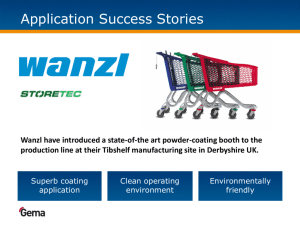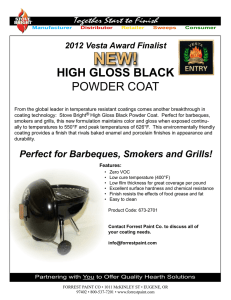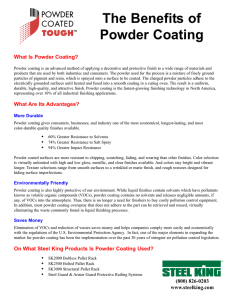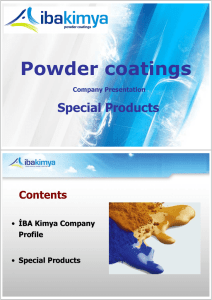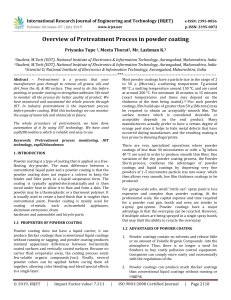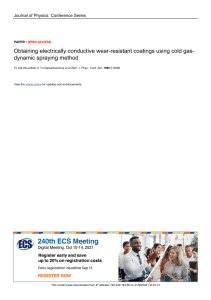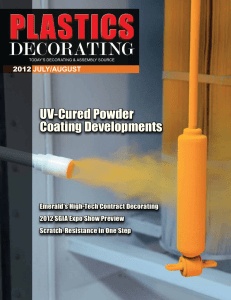APPLICATIONSHEET EPOXY POWDER COATING
advertisement
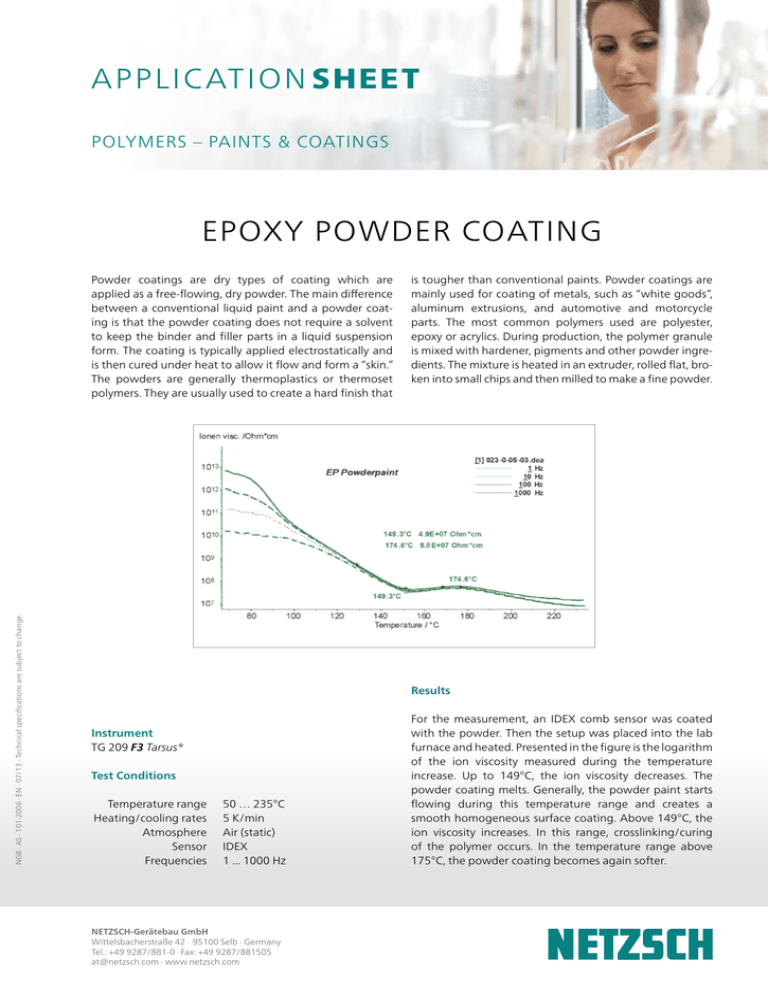
APPLICATION SHEET POLYMERS – PAINTS & COATINGS EPOXY POWDER COATING NGB ∙ AS ∙ 101-2006 ∙ EN ∙ 07/13 ∙ Technical specifications are subject to change. Powder coatings are dry types of coating which are applied as a free-flowing, dry powder. The main difference between a conventional liquid paint and a powder coating is that the powder coating does not require a solvent to keep the binder and filler parts in a liquid suspension form. The coating is typically applied electrostatically and is then cured under heat to allow it flow and form a “skin.” The powders are generally thermoplastics or thermoset polymers. They are usually used to create a hard finish that is tougher than conventional paints. Powder coatings are mainly used for coating of metals, such as “white goods”, aluminum extrusions, and automotive and motorcycle parts. The most common polymers used are polyester, epoxy or acrylics. During production, the polymer granule is mixed with hardener, pigments and other powder ingredients. The mixture is heated in an extruder, rolled flat, broken into small chips and then milled to make a fine powder. Results Instrument TG 209 F3 Tarsus® Test Conditions Temperature range Heating/cooling rates Atmosphere Sensor Frequencies 50 … 235°C 5 K/min Air (static) IDEX 1 ... 1000 Hz NETZSCH-Gerätebau GmbH Wittelsbacherstraße 42 ∙ 95100 Selb ∙ Germany Tel.: +49 9287/881-0 ∙ Fax: +49 9287/881505 at@netzsch.com ∙ www.netzsch.com For the measurement, an IDEX comb sensor was coated with the powder. Then the setup was placed into the lab furnace and heated. Presented in the figure is the logarithm of the ion viscosity measured during the temperature increase. Up to 149°C, the ion viscosity decreases. The powder coating melts. Generally, the powder paint starts flowing during this temperature range and creates a smooth homogeneous surface coating. Above 149°C, the ion viscosity increases. In this range, crosslinking/curing of the polymer occurs. In the temperature range above 175°C, the powder coating becomes again softer.


